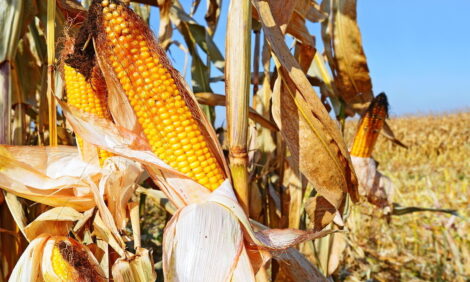



Ammoniation of Forages Improves Feeding Value
In a market such as the summer of 2012, everything has value. Ingredients we never would have considered as suitable for feeding a few years ago are now in high demand. But while we want to give every opportunity due consideration, we’ve got to be sure to know what the true nutritional value of a feedstuff is, as well as any potential for toxicity, says Chris Reinhardt, Extension Feedlot Specialist with Kansas State University.Wheat straw has traditionally been fed to beef cows and can provide energy to gestating
cows if supplemented with protein; however, ammoniation of the straw can effectively
improve its feed value. Lignin (the “glue” that holds the cells together and gives strength to
the stalk) normally prevents ruminal microbes from breaking down much of the cellulose in
mature forages. Ammoniation breaks down the bonds between lignin and the cellulose and
hemicellulose, allowing access for rumen microbes, and releasing energy for the cow to use.
Ammoniation not only adds nitrogen and increases the crude protein content of the forage,
but also improves digestibility and consumption of the forage as well. Simply, ammoniated
wheat straw has protein and digestibility values similar to moderate quality prairie hay.
The ammoniation process is relatively simple and inexpensive. Stack the straw bales in either a 3-2 or
3-2-1 pyramid. Leave several inches between bales to allow ammonia to flow freely between bales. Cover
the stack with a single sheet of 6 mil plastic and completely seal the plastic around the base of the stack
with soil. Any holes in the plastic should be sealed with tape.
Insert a hose from the anhydrous ammonia nurse tank under the plastic at the base of the stack at the
midway point of the stack and seal the plastic around the hose. A manifold can be used to disperse the
ammonia more evenly throughout the bale stack.
Most sources recommend applying anhydrous ammonia at the rate of 3% of the bales’ dry weight;
however, some evidence suggests that 1.5% may be nearly as efficacious but for a reduced cost. Studies
are currently underway at K-State to evaluate these 2 levels of addition. At a 3% addition rate, 60 lbs of
anhydrous ammonia will be added for each ton of hay. For simplicity, a nurse tank can be used containing
the exact amount of anhydrous ammonia for the amount of hay in the stack, and the tank can be allowed to
empty completely. Apply the ammonia slowly to prevent rapid expansion and breaking of the plastic.
WARNING: Anhydrous ammonia is very toxic to the skin, eyes, and respiratory tract. Therefore, only
conduct ammoniation in an open, well-ventilated area, always work upwind from the ammonia source, and
always wear goggles and rubber gloves when exposed to the anhydrous ammonia. Have abundant clean
water available in the event of exposure of the eyes or skin to the anhydrous ammonia.
The time required for the chemical breakdown to occur depends on ambient temperature: allow 1-2
weeks to cure if daily temperatures are in the 80’s or 90’s; increase this time to 4-6 weeks if ammoniating
during the winter. Prior to feeding, remove the plastic and allow the bales to aerate for several days to allow
excess ammonia to escape.
Corn stalks can also be successfully ammoniated and forage quality effectively improved in a similar
manner. The value of wheat straw and corn stalks can be dramatically improved by ammoniation. The cost
of ammoniation is presently $30-40 per ton of forage, which makes the ammoniated crop residue more
cost-effective than prairie hay which might need to be hauled from a distance. In the present market, all
forage has some value; however, it’s imperative to test all forages to determine what that value is.


